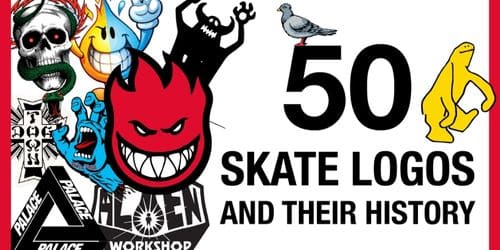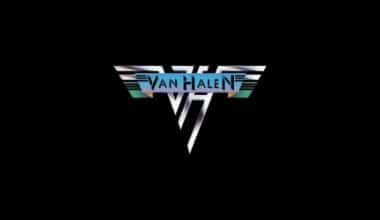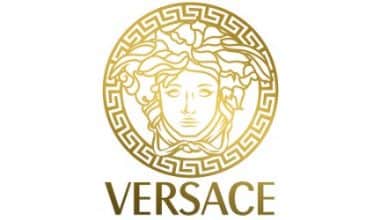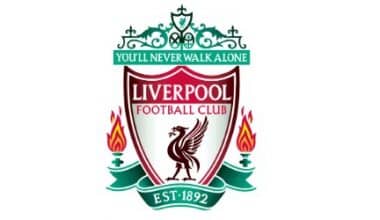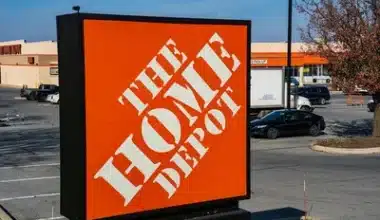Deluxe Distribution sells skateboards made by the Spitfire company. It is also a branch of Ermico Enterprises, Inc., which Brian Ware started in San Francisco in 1986. The next year, in 1987, a company called Deluxe was started to make and sell parts for skateboards and skateboarders. This article talks about the meaning of the Spitfire skateboard wheels logo and the Windsor Spitfire logo.
About Spitfire Company
As soon as Deluxe Distribution bought this brand, it changed its focus to become a one-stop shop for skate products. She started her business with the goal of being the best place to get skate wheels in the business, and she did.
But these victories were just the start of a long list of victories. The company started by putting wheels into two different categories, which made them a very valuable part of niche specialization. She knows a secret way to make F4 Streetburner wheels, for skating on the street and doing tricks at a skate park (F4 Parkburners).
Later, more items with a Spitfire theme were added to the catalog. The next step was to make bearings for skateboards that are reliable and last a long time. Most people now think they are the best of their kind. After that, there was more equipment, clothing, stickers, and other things for skaters. This category includes a wide range of shoes, wheels, coats, hats, paraffin wax, skins, belts, wallets, purses, buckles, socks, long sleeves, T-shirts, windbreakers, and backpacks.
Also, the company that makes the boards takes great care of them, so skaters can stand on them and try out new tricks with confidence. The list of available models is always being changed. Spitfire also works with other well-known fashion and skating brands to make samples and sometimes even whole collections. The company tries to show its collections in groups called “capsules,” which all have the same look (from caps to bearings).
Its Background
The company’s products have different designs on them, such as the logo. She likes the more upbeat and modern style of drive-in movies. Because the team has well-known skateboarders on it, the company makes sure to meet their needs. About 25 people are a part of it, including Grant Taylor, Bryan Herman, Erik Ellington, Peter Hewitt, Theotis Beasley, Eric Koston, Andy Roy, and Peter Ramondetta, to name just a few.
1987 — Today
Spitfire has stuck with the logo that was made for the company in the late 1980s in terms of branding. The one-color symbol has changed colors a few times over the years, but it has never used any other typeface than orange and red, either flat or in a gradient.
The emblem for the Spitfire logo, which was made at the end of the 1980s, is still used today and has become an icon in its own right. The thick black outline of the flame shows an orange (or crimson, depending on the needs of the brand) face with a sneering, mocking frown. The triangle-shaped teeth support and balance the triangle-shaped flames that make up the “hair” of the insignia. This makes the wide white smile look more dangerous and scary than friendly and warm.
The design and colors of the Spitfire badge, along with the name of the brand, show who the company is and how much they care about the skateboarding community.
The Emblem’s Font And Colors
The original Spitfire logo didn’t have any words on it. Instead, it focused on a graphic representation of the brand’s symbol, the Flame, in orange, black, and white with a single white detail. The brand is meant to appeal to young people, and the logo’s bright colors do a great job of showing that. In the same way, the use of orange and red, which stand for passion and activity, is right for the Spitfire setting.
What Brand Is Spitfire?
Deluxe Distribution sells skateboards made by the Spitfire company. And it is a branch of Ermico Enterprises, Inc., which Brian Ware started in San Francisco in 1986. The next year, in 1988, a Deluxe company began to make and sell parts for skateboards and skateboarders.
Windsor Spitfire Logo
The Windsor Spitfire logo is a junior ice hockey team in Canada’s Ontario Hockey League (OHL). They live in Windsor, Ontario, which is in Canada. The team started playing in 1971, and in 1975–76, they joined the Ontario Major Junior Hockey League (OMJHL). One OHA Jr. from another family. The team was founded in 1946 as the Spitfires. In 1953, they moved to Hamilton and became the Tiger Cubs. In 1996, they moved to where they are now as the OHL Erie Otters, after going through several name changes and moves.
The History of the Windsor Spitfire Logo
From 1945 to 1953, there was a team of Spitfires in the OHA. The Royal Canadian Air Force’s 417 Combat Support Unit, also called the “City of Windsor,” was founded in England during World War II. Its headquarters are now at CFB Cold Lake in Alberta. The Spitfire was the plane that the squadron flew. During this time, the Spitfires went to the league finals twice and had four players who would later be inducted into the Hockey Hall of Fame.
The Windsor Junior Hockey League did not start to organize junior hockey in the area until 1945. When hockey fans in Windsor turned their attention to the OHA Senior A Hockey League in 1953, the Spitfires broke up and the Windsor Bulldogs were born. Soon after, five former Spitfires joined the Bulldogs. One of them, Bobby Brown, went on to win an Allan Cup with the club (1963). In 1964, the Bulldogs quit the International Hockey League after only one season.
Tier II Junior A of the Windsor Spitfire logo
The Windsor Spitfires were a Tier II Junior A team in the Southern Ontario Junior A Hockey League from 1971 to 1975. The Guelph CMCs hosted the Guelph Spitfires for their first game as a franchise on October 1, 1971. Laurie Gregan scored the first two goals for the Spitfires in a game that they lost 11–3. The team’s goalie, Larry Verlinde, stopped 37 shots in the team’s first game, in which they lost 1-0. On October 7, 1971, the first game in franchise history took place at the Windsor Arena. It was a 4-2 win over the Chatham Maroons, and future NHL goalie Eddie Mio got the win by making 49 saves. Dean Sheremeta made the shot that won the game.
The Spitfires had a 21-win, 32-loss, and 3-tie record for the year. The Chatham Maroons will play the Spitfires in a best-of-seven league quarterfinal. The Spitfires came in sixth out of eight teams. Even though they came in third place with a record of 33 wins, 17 losses, and 6 draws, the Maroons still won the trophy. In Game 1 of the playoffs, which took place in Chatham, Ontario, on February 23, 1972, the Spitfires beat the Maroons by a score of 3-2 to go up 1-0 in the series. Goalie Bryan Rose, who made 35 saves, and forward Wolf Hiesl, who scored the game-winning goal and the Spits’ first playoff goal, led the winning team. The end of the Spitfires’ season came when the Maroons beat them in four straight games.
In 1972
In their second season, 1972–1973, the Spitfires had a record of 30–21–9, with 9 ties. The Spitfires came in third out of seven teams in their conference. In the quarterfinals, they will play the Niagara Falls Flyers (28-25-7). The Spits lost game one of the series at Niagara Falls by a score of 6-4, but they won game two at home by the same score to tie the series. The Flyers beat the Niagara Ice Dogs 7-2, giving them the lead in the series once again. The Spitfires’ fourth game was a nightmare. At home, the game was tied 5-5 going into the third period, but they lost 7-5.
For game five, the Spitfires had to make a change. Rick Heinz, who will play in the NHL, came in as the third-string goalie after Tony Piroski and his partner Jean Pominville had dull starts in games three and four. Heinz had spent the season with the Windsor Royals, the minor league team for the Windsor Spitfires. He wasn’t ready for how intense the Junior A playoffs would be. The risk paid off, as the re-energized Spitfire team won the game 9–4 with 24 saves from Heinz. Coach Jerry Serviss put back Tony Piroski as the starting goalie for game six, which was away from home. The series is now tied at 3 games apiece after a 5-4 win and 33 saves from Piroski.
More Information
Mark Smith scored a goal that helped the Spitfires win in the end. In the seventh and final game of the series, which was played in Windsor, the two teams played each other once more. The Spitfires won with a final score of 6-3 in front of 5,189 enthusiastic fans. This was the first time the Spitfires won a series in the postseason, and it took them seven games to do it. The Guelph Biltmore was the top seed. The Mad Hatters were already ready for the semi-finals and were waiting for them (39-13-8). The champions from last year, the Biltmore, beat the Spitfires in four games.
1973
The Spitfires’ second-tier junior A season of 1973–1974 was a turning point. The Spitfires won the Southern Ontario Junior A division with a record of 39-15-8 under their new head coach and general manager, Wayne Maxner. With those points, they’d be four points ahead of the second-place Welland Sabres and guaranteed a spot in the league’s semi-finals, no matter how the rest of the season goes. Scott Miller would finish the season as the top scorer in the Southern Ontario Junior Hockey League. He had 73 goals and 125 points. The Spitfires’ cross-river rivals, the Detroit Jr. Red Wings, gave them a tough opponent in the semifinals.
The Red Wings were fifth out of the league’s eight teams (31-25-6). The Spitfires won their first game of the semi-final 7-1 at the Windsor Arena. In the second game, which was played at the Detroit Olympia, Windsor again won easily, this time by an 8-0 score. The third game was also played in Windsor, where the Spitfires won 9-2. In the fourth game, which took place at the Olympia, the Red Wings tried to make a comeback, but the Spitfires were too strong. The score was 7–5. After sweeping the Red Wings in four games, Windsor might take a break before going up against the winner of the series between the Chatham Maroons and the Welland Sabres, which is still going on.
1974
On March 16, 1974, the first game of the SOJHL Final was between the Spitfires and their long-time rivals, the Chatham Maroons. The game took place at the Windsor Arena. Even though they lost the first game (6-1), the Maroons won the second game in Chatham (5-2). After a 2-1 win at home on March 18, the Spitfires took the lead in the series. Gary Armstrong scored the game-winning goal in the third period. Goalie Dennis Thorpe made 40 saves. They won the fourth game in Chatham with a score of 6-4.
The next night, March 21, the Spitfires beat the Maroons 4-3 in Windsor to win the SOJHL playoff title. Gary Armstrong would score a goal that would win another game. Hugh Mitchell, the captain of the winning team, raised the Jack Oakes Memorial Trophy in front of 5,117 cheering fans after they won the playoff series. With this win, the Spitfires moved on to the finals of the 1974 Centennial Cup, which was the national championship for junior A hockey.
The Wexford Raiders of the Ontario Provincial Junior A Hockey League were their first opponents in the Eastern Canada playoffs for the Dudley Hewitt Cup. The Ontario Hockey Association Junior A championship was also on the line, along with the Buckland Cup. The first game was in Rexdale, and the Spitfires won by a score of 4–2. This put them ahead in the series. After the Spitfires won 5-2 at home the next night, it looked like they were in charge of the series. The Raiders had other plans, though. They won games three and four with scores of 6-2 and 4-1, respectively, to even the series.
More Details
Back in Rexdale, the Raiders beat the Spitfires 8 to 2. To force a decisive game seven, the Spits had to win at home, where they were the underdog. By winning 7-5, the Spitfires have made this a memorable series. The Wexford Raiders ended the season of the Spitfires on April 6, 1974, when they beat them 6-3 at home. The Wexford Raiders then moved on to the next round of the national playoffs.
During the playoffs in 1974, the Windsor Spitfires tried to join the OMJHL, which later became the OHL. “Windsor Arena was not acceptable as a major A venue. Another bid was rejected, this time from their minor league team, the Windsor Royals Junior B of the Great Lakes Junior Hockey League, due to a lack of a suitable arena.
In 1974–1975, Jim Butcher led the Spits to their second straight regular season title, 11 points ahead of the second-place Welland Sabres. The Spits’ record was 40 wins, 15 losses, and 5 ties (30-16-14). John Tavella had the most points in the league with 117 (54 goals), and goalie Floyd St. Cyr let in the fewest goals (league-best 29). The Spitfires’ semi-final game was against the Detroit Jr. Red Wings, who were the worst team in the league (15-38-9).
In 1974, the Team Won When They Played at Home
The Spits won the first game, 11-2 at home. Before that, the Spits won at the Detroit Olympia by a score of 8-2. The Spits won the third game, which was also at Windsor, and had a score of 10-1. The Spits had a chance to win the series in game four, but the Red Wings beat them 5-3 in front of their home fans to prevent a heartbreaking loss. In the last game of the season, Ian Campbell scored late in the third period in Windsor to help the Spitfires move on to the finals.
The Guelph Bilmores were in fourth place and had a record of 23-31-6. They were a tough opponent for the Spitfires. The Biltmore and the Spitfire each had a 5-5 record against each other, with two ties. The Spitfires had been off for a week and were playing against a team that was on fire. They were also missing scoring champion John Tavella, who was banned for three games for butt-ending a Detroit Red Wings player.
1975
In the first game, the Spits lost 6-5 at home because of a late 2-on-1 odd-man rush in the third period. The next day, the Spitfires were ahead, 6-1 after the first period and 8-4 after the second, but they lost those leads in the third, and the game ended in a 9-9 tie in Guelph after overtime. The Spitfires lost the first two games of the series, but they came back to win game three in Windsor, 4–2. The Spitfires lost game four in Guelph by a score of 6-4. After the first period, they were up 3-0.
With their 8-4 win in Game 5, the Spitfires tied the series at five games each. In game six, Guelph won 6-4 at home, putting them back in the lead. The Spitfires came back to win the final game of the series, which was the eighth and deciding game. They won 6-4 in Windsor. After four years in the Southern Ontario Junior A Hockey League, the Spitfires’ season ended when they lost to Guelph in game eight, even though they were up 3-0. The final score was 6-5, and the series was over (9 points to 7).
The Ontario Major Junior Hockey League (later renamed the OHL) approved the Windsor Spitfires in February 1975. They didn’t accept Spitfires into Major Junior A despite their tiny arena. The league rejected the Spitfires’ attempt to join in 1974 because of the size of the arena, but they could look past that because the team had invested $200,000 in it two years previously.
Spitfire Logo Skateboard
The Spitfire skateboard logo started in the United States toward the end of the 1980s. Aside from being one of the best teams in the history of skateboarding around the world, the company is famous for making high-quality wheels for skateboards, clothes, and other accessories.
Kevin Ancell came up with the original Spitfire logo. He came up with such a unique symbol that is ranking now in the top 10 most popular skateboarding icons. And it’s perfect for the company because it gives the same feeling that the company’s name does: boundless excitement. The grin, which is an anxious smile, conveys an aggressive joy from within. Riding the board brings out all of the human emotions at once, from pure joy to pure fear. The hair standing on end like sharp tongues of flame and a tense but self-satisfied look both contribute to this feeling.
The artist made the triangular teeth look like clenched fangs to add to the drama and ferocity. Sliding between them would make a zigzag pattern on the surface. The black coloration brings out the tension in the smile on the tight lips. He also went ahead and outlined the rest of the symbols in red as well. The dark brows and eye lines really stand out against the white pupils. The main color of the luminous head is bright yellow or red. Even people who have never heard of skateboarding can instantly recognize the logo because of the stark black border. It is now a standard feature for all products with this label. To view the Spitfire skateboard wheels logo check here.
Spitfire Skateboard
The Spitfire skateboard wheels logo started in 1987. It’s one of several companies handled by Deluxe Distribution, which also handles Krooked, Anti Hero, and Real. Even though the company is famous for its wheels, it also sells skateboard bearings, tools, grip tape, clothes, stickers, and accessories like wallets and purses.
Several of the best skateboarders in the world, like Shane O’Neill, Theotis Beasley, Erik Ellington, Andrew Reynolds, Sean Malto, Eric Koston, Chris Cole, Omar Salazar, Mike Mo Capaldi, Mike Anderson, Guy Mariano, and Daewon Song, ride on Spitfire wheels. The wheels in the company’s current products have “Formula Four” performance urethane, which the company says gives them better performance and unbeatable abrasion resistance, as well as a longer lifespan and a higher tolerance for abuse.
Si Reynolds and Capaldi’s intros and Song’s 2012 ad for the ‘Enter the Daewon’ trademark wheel are memorable video sequences. Nassim Guammaz, Raney Beres, Zered Bassett, and Dennis Busenitz made short films for “Formula Four”
Spitfire Wheels
Most Spitfire Wheels have the tried-and-true Spitfire Formula Four urethane and have either a 99a or 101a durometer. Some Spitfire Classics are made from ordinary urethane, and Spitfire Wheels also sells an 80a cruiser skateboard wheel. The Spitfire 80HD formula used to make these soft cruiser wheels makes sure they won’t bend, even when riding over rougher terrain, so you can keep your top speed.
Spitfire’s 99 Duro wheels also have a higher rebound, which makes them quick and reliable while also making the ride more comfortable on any terrain. Their flat-spot resistance is odd, and they grip a little better than the harder varieties. All-purpose rims have an excellent range of hardnesses to choose from.
For more than 25 years, Spitfire’s unbeatable urethane formula has made them the gold standard in its field. No matter the surface or weather, your Spitfire wheels will always roll true and to size. They give you full control of your movements and guarantee a fast, steady ride. Skateboard wheels from the Spitfire brand come in a wide range of colors and designs and are sold in packs of four.
You don’t have to look any further than Spitfire for a high-performance bearing. The rings in Spitfire skateboard bearings are made of high-carbon chromium steel, so they can withstand high temperatures without melting. Spitfire, the market leader in grip tape, has developed cutting-edge products for better board control. The glue used in Spitfire grip tape is Mod Grip. It is made of silicon carbide and doesn’t wear down. Their grip tape is not only weatherproof, but it is also temperature-proof, tearproof, and peel-proof.
The Types of the Spitfire Wheels
In the list below, you’ll find the different kinds of spitfires;
Spitfire Wheels Classics
The most popular form of skateboarding. Skateboards with rounded edges are best for all-around use because they provide a good balance of speed and control.
Spitfire Wheels Radials
These Spitfire skateboard wheels have the biggest ride surface and diameter of any in the company’s history. They’re less rounded and more square, giving you more contact with the ground for better grip and handling. This rim also lets you keep your speed for longer and has a responsive slide. Superior for a leisurely cruise. It’s perfect for use on the streets, in skate parks, and in private bowls.
Spitfire Wheels Radial Slims
The Radial’s thinner and lighter sibling, this slide gives a little more control with less speed loss. This is true again; if you skate in a variety of places, like streets, skateparks, and bowls, this is the best tool for the job.
Round Conical Spitfire Wheels
Conical wheels have a large rolling area and a round edge, which makes it easier to roll off ramps without getting caught. Because the border was cut off, these wheels are lighter and a great choice for transition skating.
Full Conical Spitfire Wheels
The profile and riding surface of these Spitfire Conical wheels are a little bit bigger than those of the standard Spitfire wheels. They really shine when they skate on water or in transition.
Spitfire Wheels Lock-ins
Lock-Ins skateboard wheels have a unique shape with a sharp cut-off on the inside edge of the hanger to make sure they lock in well to the coping. An outer cone-shaped cut makes the edge smooth. It’s great for slappy and other forms of skating that change direction quickly.
Is Spitfire Still a Company?
It’s true that the company’s logo is a spitfire and that the company sells a wide range of products and services with a spitfire theme (audio services, Spitfire aircraft, etc.).
Spitfire, a company that has been around since 1987, is one of the brands that Deluxe Distribution sells. Other brands that Deluxe Distribution sells are Krooked, Anti Hero, and Real. The company is famous for its wheels, but it also sells bearings, tools, grip tape, clothes, stickers, and accessories like wallets and purses.
Is Spitfire a Good Brand?
Even though they are expensive, Spitfire wheels are some of the most durable options for your skateboard. Polyurethane makes them last twice as long as models that cost half as much.
What Does “Spitfire” Mean in Slang?
The noun form comes from the verb “spit” and the noun “fire.” It was used to mean “a cannon” in the 1610s. The adjective form comes from the early 1600s. The term has been around since the 1670s, and the fact that it now means “an angry, passionate person” shows how old it is.
Why Are Spitfires So Famous?
In the mark of respect. The Spitfire is the most well-known plane from World War II. During the Battle of Britain, the British had a big advantage over the Luftwaffe because of how well-designed and well-equipped their planes were. This helped them beat the Luftwaffe.
How Much Is a Real Spitfire Worth?
After 11 years and a 100-point restoration that took a lot of work, this Spitfire is now for sale for £3,500,000, which is about $4,710,000.
How Much Would a Spitfire Cost Today?
During the time that the Spitfire was being made, the average cost per unit was £12,604. At the prices of today, each Spitfire would cost just under £800,000, which is about $950,000. This is more expensive than the Hurricane, which is the other high-performance fighter they use for RAF.
How Much Is an Original Spitfire Worth?
The price tag, however, has gone up to £4.5 million, which is about $6.0 million by January 2022, because the market value of old planes is going up so quickly.
Is Spitfire a Skate Brand?
The Spitfire company was established in 1987, and it is currently a part of the Deluxe Distribution network. Other brands in this network include Krooked, Anti Hero Skateboards, and Real. It is best known for its wheels, but it also sells bearings, tools, grip tape, clothing, stickers, and accessories like bags and wallets. Its wheels have earned it the most notoriety, however.
What Was Unique About Spitfire?
The most well-known aircraft to have served in World War Two was the Spitfire. During the Battle of Britain, the German Luftwaffe was no match for its ground-breaking design and superior specifications, which provided the British with a decisive advantage. However, early models were frequently cruelly exposed when they were pitted against the adversary in head-to-head duels.
What Was Unique About Spitfire?
The well-known elliptical wing of the Spitfire, which featured sunken rivets for the purpose of having the aircraft’s cross-section be as thin as possible, enabled the aircraft to reach a top speed that was greater than that of the majority of other fighters available at the time. Because of these wings, the Spitfire was able to be one of the most agile fighters in the sky, which gave them the upper hand in fights that consisted of just the two of them.
What Is the Spitfire Known For?
The Hawker Hurricane and the Spitfire were the only British aircraft to win victory laurels in the Battle of Britain (1940–41), but the Spitfire served in every theater of the war and was produced in more variants than any other British aircraft. Both aircraft are famous for their achievements in this conflict.
How Old Is Spitfire Brand?
Jim Thiebaud, a native of San Francisco, established Spitfire Skateboards in 1987. Today, the company is a member of the Deluxe Distribution family and can be found on shelves next to other reputable brands such as Real, Thunder Trucks, Venture, Krooked, and Anti Hero Skateboards.
Conclusion
Since its start in 1987, Spitfire has been a leader in the skateboarding industry. It is now one of the most well-known brands in streetwear all over the world. The company started out making skateboard wheels, but now it sells everything from accessories to clothing.
- Good Skateboard Brands: For Beginners And Pros 2023(Updated).
- POPULAR SKATEBOARD BRANDS: for Girls 202(Updated!!!)
- SEATTLE KRAKEN LOGO: Concept, Record, and What You Should Know
- TOP 13+ SKATEBOARD BRANDS With the Best Reviews in 2023(Updated!!!)
- Best Skateboard Brands For Beginners & All You Need
- https://businessyield.com/brand-stories/prada-logo/
- THRASHER LOGO: History of The Skateboarding Magazine.
- DISNEY JUNIOR LOGO: What is the Logo History & All You Need to Know
